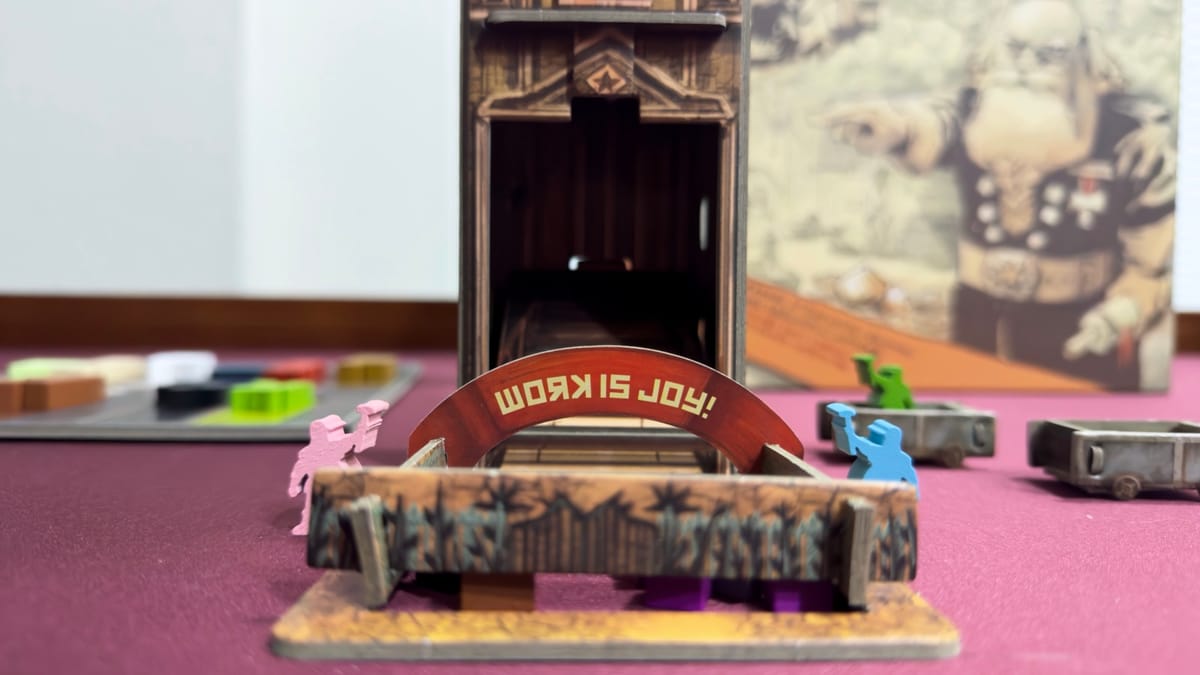
Step into the bustling corridors of Factory 42, where you’re thrust into the role of overseeing Marxistic dwarves in an industrialized setting fraught with resource management, negotiation, and government mandates. Designed by Ren Multimäki and published by Dragon Dawn Productions, Factory 42 is a worker placement game for 2-5 players and invites you into a world where acquiring resources and fulfilling government orders should be straightforward. However, the unpredictable Bureaucracy Tower looms large, dispensing resources in a seemingly random manner—such is the nature of government, it seems.
In Factory 42 your tasks vary: from gathering missing supplies, loading and dispatching railcars, transferring materials to production areas, to burning excess resources to generate steam power, and trading in the open market. The game captures the challenges and strategies of running a large factory, making every decision a critical balancing act between productivity and disorder. While the game includes an expansion right in the box, this review will focus solely on the main game itself, exploring its core mechanics and the unique experience it offers.
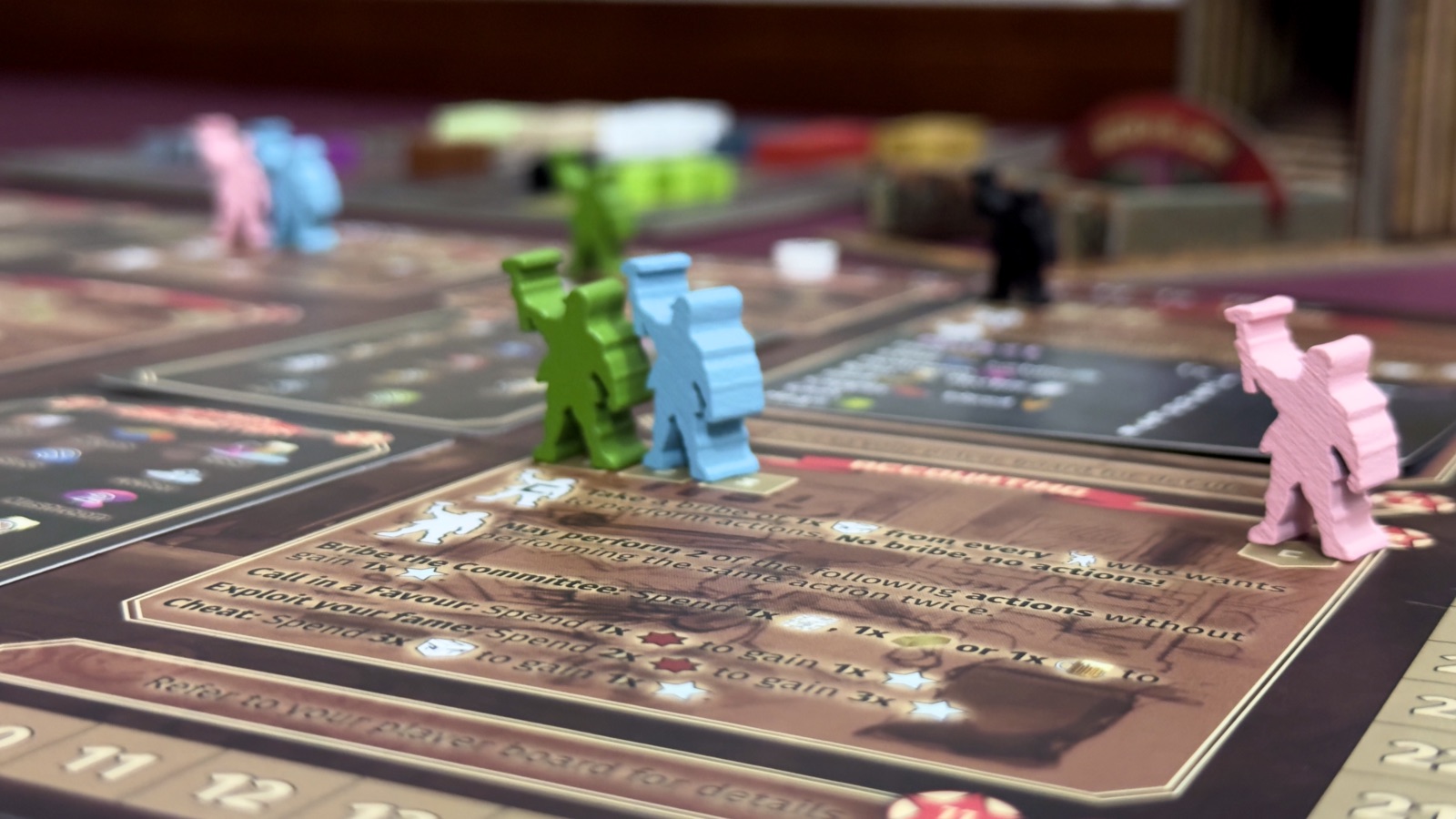
Gearing Up
Factory 42 engages players in a world of industrial strategy across six potential rounds, with games potentially ending early if a player reaches 42 victory points. Each player controls a team of six or seven workers, varies with player count, along with a personal board and four key factory improvements. These upgrades are crucial for storing and sharing materials, as well as generating exclusive steam power.
The game appears simple at first glance, but it offers a surprising depth of strategy and thoughtful gameplay. Each round, players place their workers on specific numbered spots on the board. These placements initially have no immediate effects. Only after all workers are set do the effects activate in numerical order, turning each player’s strategy into action.
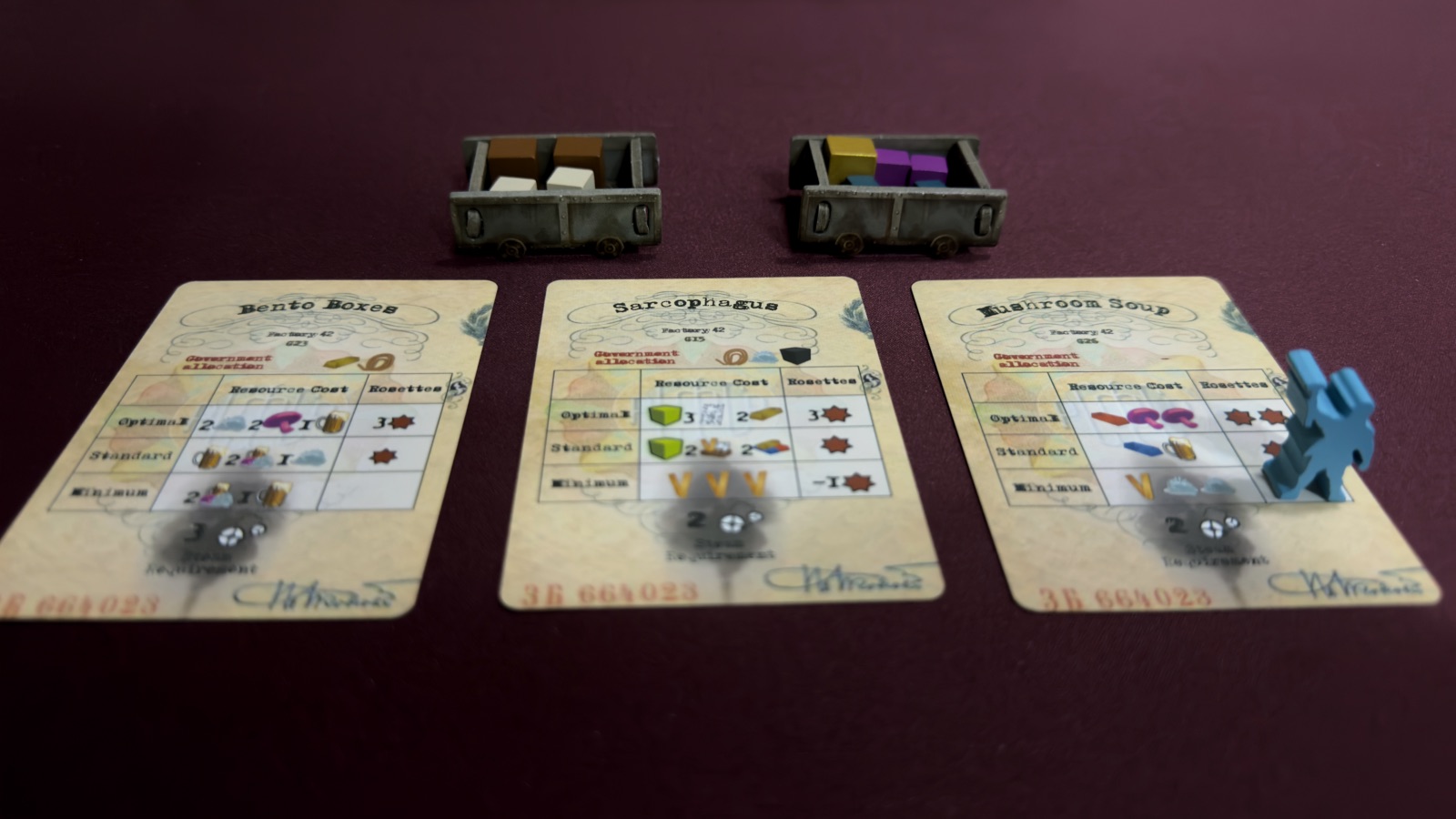
Let’s walk through a typical round. You kick off by snagging work orders from the government—these are your main goals. Next, you and your competitors pool resources together, navigating the unpredictable whims of the Bureaucracy Tower’s resource allocation. The real logistical dance begins as you load and move resources on railcars to your facilities. Any excess? Don’t throw it out; burn it to generate more resources. And don’t forget the market trading—it’s crucial for fine-tuning your resource stack to your strategic advantage. Each round ends with you using these resources and steam to fulfill government orders and enhance your factory’s efficiency.
Assembly Line Analysis
In Factory 42, worker placement takes a compelling twist with the Commissar space, adding an intriguing layer to how other locations operate. For example, if a Commissar is present at the railcar loading station, you can load additional resources, which is a big plus. However, at the accounting station, you need to bribe the Commissar before taking your action. This mechanic often puts me in a tough spot. Should I deploy a worker to the Commissar spot at accounting to rake in bribes, or should I prioritize actions that align more closely with my objectives? If I ignore the bribe-spot, will another player capitalize on it, and can I afford the bribe if they do? These decisions would be so much easier if I had more workers!
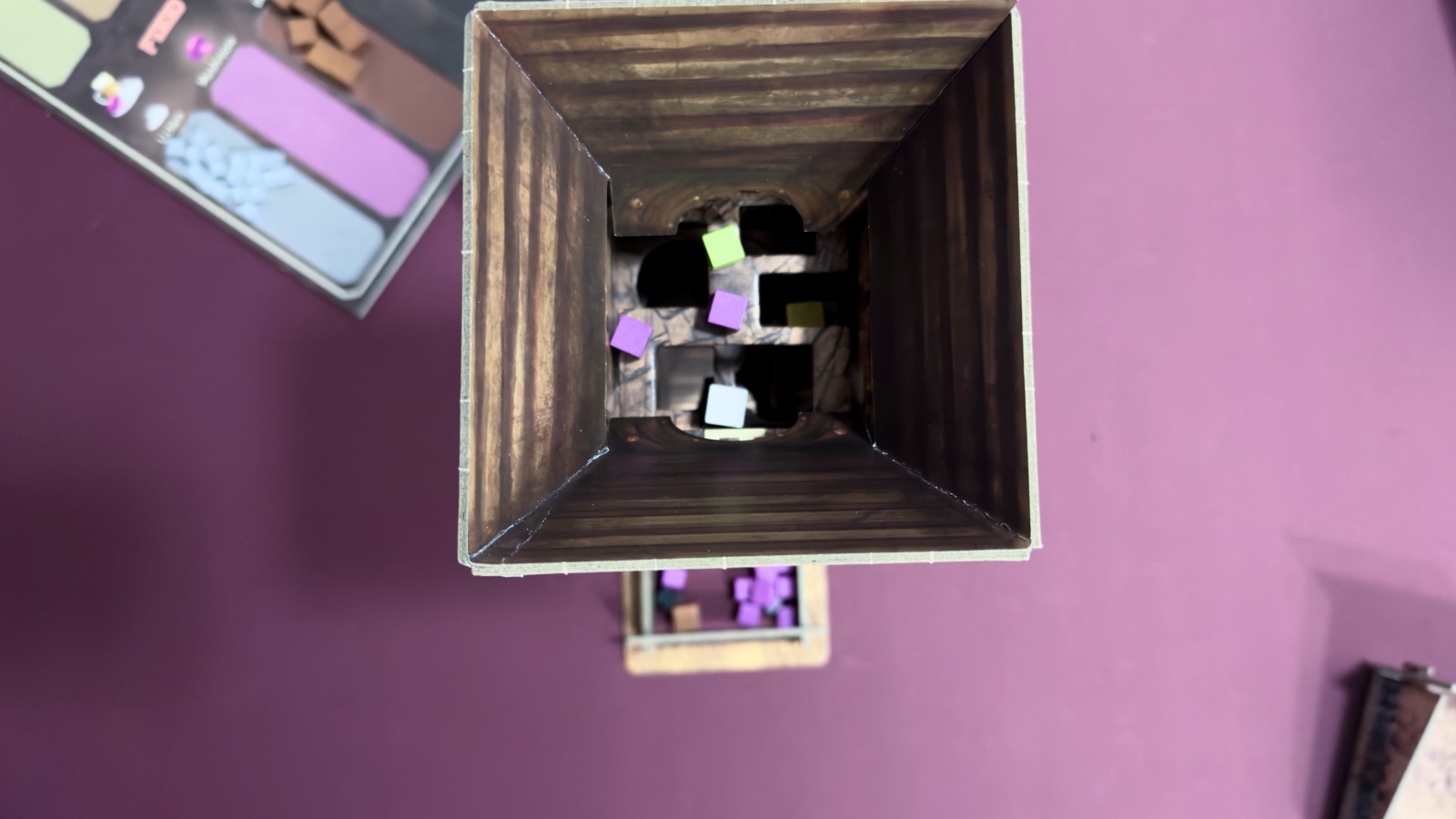
The Bureaucracy Tower is similar to a dice tower but is designed to sometimes keep resources inside. When dropping in resources, sometimes they get stuck in the tower and don’t come out until later rounds. Why so many mushrooms? We have way too many mushrooms and not enough wood! Guess who’s been packing the tower with all these mushrooms, causing a shortage of wood? (It was me.)
One of the optional rules outlined in the rulebook promotes deal-making, a variant I highly recommend. This option allows players to make a deal to trade resources, which is particularly useful when you’re just shy of completing a government order. Encouraging cooperation becomes important because failing to fulfill an order results in a penalty: players lose victory points. However, you can avoid this penalty by discarding rosettes—a resource earned from fulfilling orders or from placing workers on specific board spots. Naturally, no one wants to lose victory points, but if you have rosettes to spare, you might not mind watching others take the hit.
Quality Control
The components of Factory 42 are of high quality. The meeples are nicely detailed, and both the cards and player boards feature a durable linen finish. The railcars feel great, and the resources are designed in varying sizes, with larger ones representing greater value. The resource board is double-layered, featuring recessed sections for better organization. The Bureaucracy Tower, while neat, can be awkward at times, especially when retrieving resources from the Common Pool.
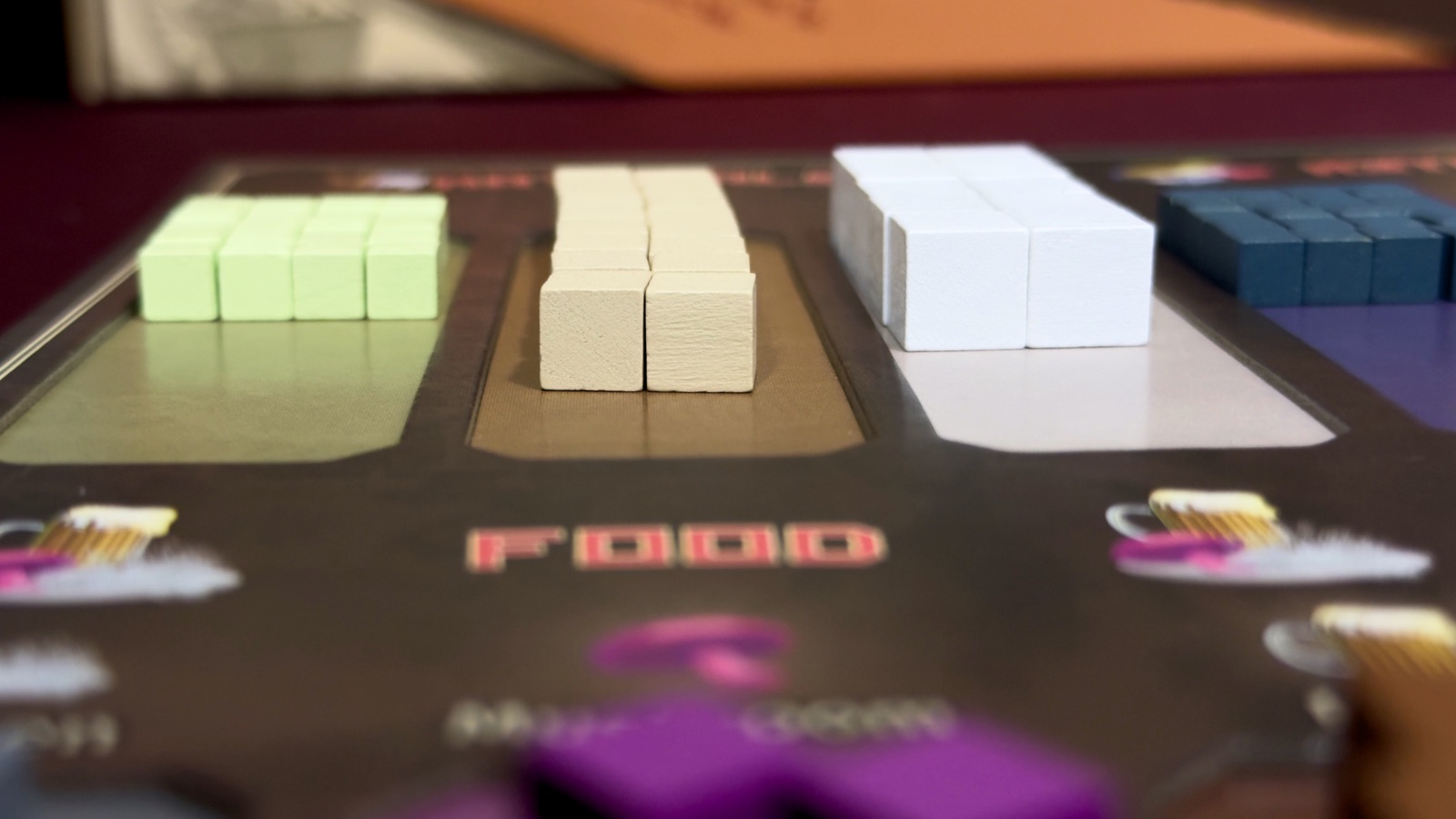
Factory Faults
The playtime listed on the box at 90-120 minutes seems optimistic. In my experience, the first playthrough took over three hours as players were learning the location effects and the overall gameplay loop. However, by the game’s end, rounds were moving quicker. Additionally, the color scheme of the board sometimes lacks sufficient contrast, making some of the text difficult to read and potentially leading to confusion during gameplay. The rulebook and some cards feature Cyrillic letters as stylistic substitutes for Latin letters, which can макэ sэntэncэs hard tо Яэad.
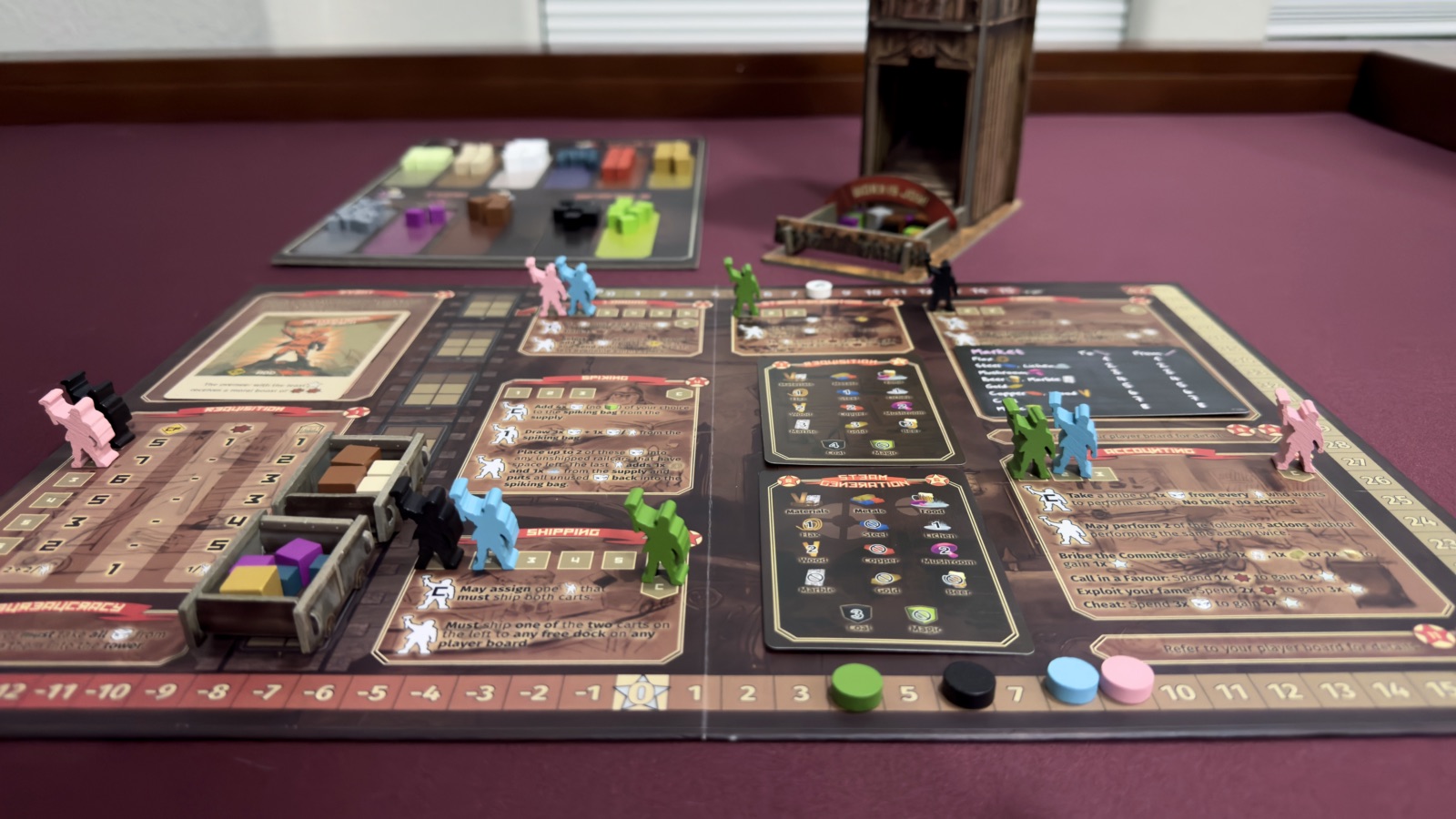
The Final Product
Factory 42 offers an interesting dive into industrial strategy, challenging players to manage resources and negotiate under pressure. The game involves intricate worker placement and resource trading, becoming more engaging with each round. While the initial playthrough might exceed the box’s 90-120 minute estimate due to a steep learning curve, the high-quality components and thoughtful design make it worthwhile. In the end, Factory 42 commands attention for its strategic depth and unique take on bureaucratic inefficiencies, appealing to those who enjoy worker placement and negotiation games.
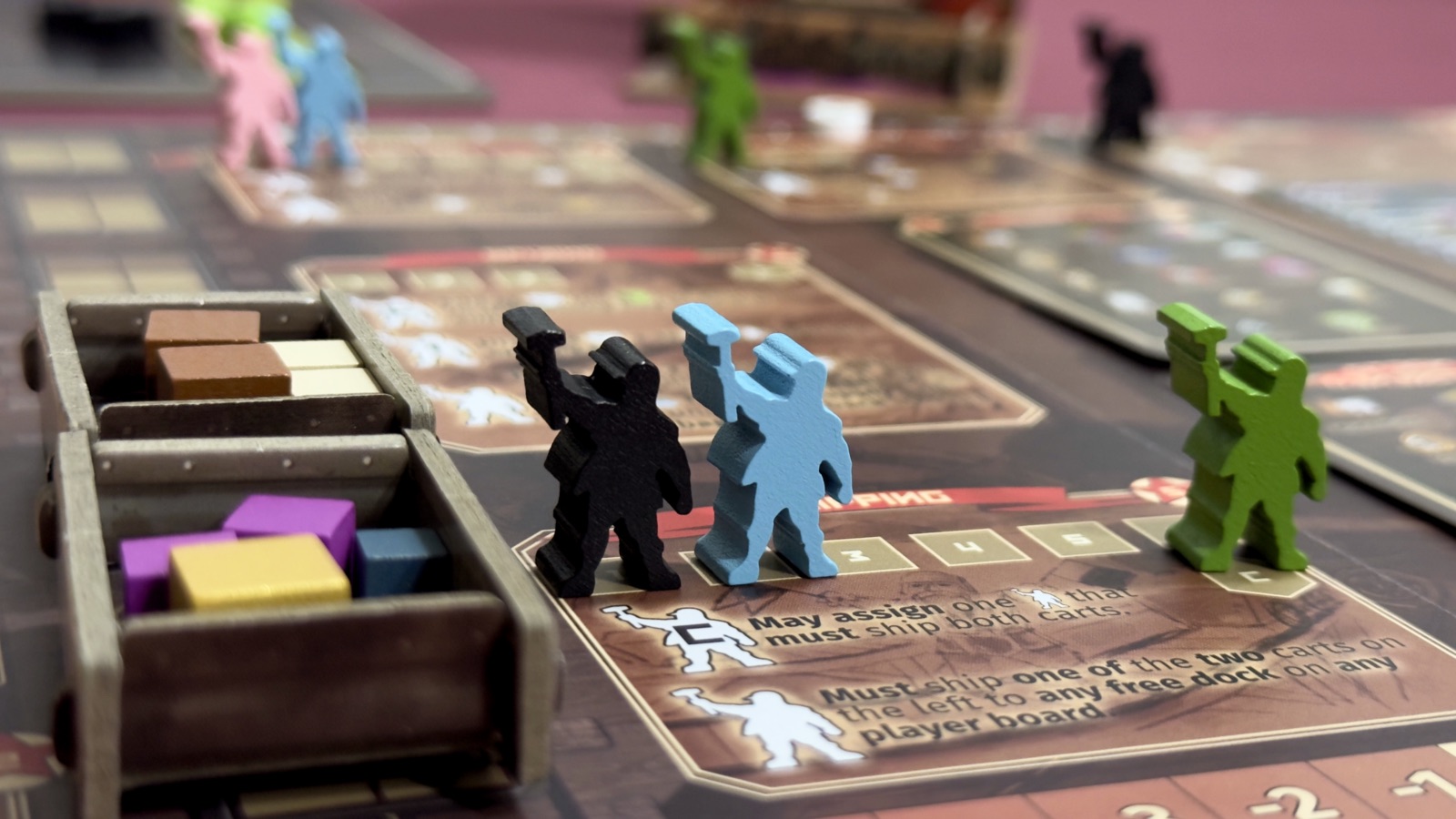
Factory 42
Good
Factory 42 offers an interesting dive into industrial strategy, challenging players to manage resources and negotiate under pressure. The game involves intricate worker placement and resource trading, becoming more engaging with each round. While the initial playthrough might exceed the box's 90-120 minute estimate due to a steep learning curve, the high-quality components and thoughtful design make it worthwhile. In the end, Factory 42 commands attention for its strategic depth and unique take on bureaucratic inefficiencies, appealing to those who enjoy worker placement and negotiation games.
Pros
- Intricate worker placement
- High quality components
- Engaging gameplay with the Bureaucracy Tower and negotiation
Cons
- Steep learning curve
- Text legibility
- Don’t bump the Bureaucracy Tower
